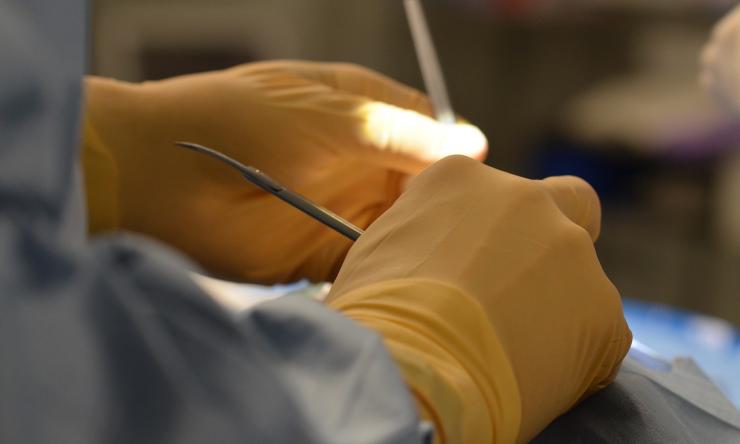Optimizing tissue oxygenation in breast reduction surgery
In the last few years, breast reduction procedures in the U.S. have become increasingly common. According to the American Society of Plastic Surgeons, nearly 100,000 breast reduction procedures were performed in 2020.
This procedure involves a high-tension T-Junction suture in which three incisions meet, forming the shape of a T. Larger breast reductions with longer incisions may have a higher risk of complications and wound healing problems at the T-Junction, which represent 13 to 39% of wound breakdown. It’s known that decreased blood flow to the wound, which then reduces the amount of oxygen to the area, promotes wound breakdown.
Looking to improve tissue oxygenation in the T-junction suture, researchers at Baylor College of Medicine tested a device that would be applied on the suture to provide continuous diffusion of oxygen. The results of this pilot clinical trial published in the Journal of Surgical Research, show that this home-based therapy is safe, easy to use and well accepted by patients, and it significantly increased tissue oxygenation when compared to traditional care.
“The primary goal of our study was to determine whether the device that provided continuous diffusion of oxygen would be easy to use and accepted by patients,” said first author Dr. Alejandro Zulbaran-Rojas, research assistant II in the Michael E DeBakey Department of Surgery.
Zulbaran-Rojas and his colleagues teamed up with Dr. Sebastian Winocour, associate professor of surgery and medical director of the plastic surgery faculty group practice at Baylor. Winocour also is section chief of plastic surgery at Baylor St. Luke’s Medical Center. Winocour performed bilateral breast reduction surgery on 19 participants. To evaluate the effect of continued oxygen perfusion, the surgeon placed on the T-junction a special dressing that is connected to a device that delivers oxygen 24/7 on one breast, and then covered it with a silicon sheet. For comparison in the same patient, the other T-junction suture was cared for using a standard procedure that included a skin adhesive.
Wound healing was assessed weekly after surgery. To measure the amount of oxygen in the wounds, the researchers used a near infrared spectroscopy camera that can detect oxygen up to 3mm inside the tissue.
After four weeks, there were no device-related adverse effects. The team was pleased to see that 84% of the participants had a positive attitude toward using the device, 78% perceived it as easy-to-use and 77% considered it useful. Furthermore, the wounds treated with the device had higher tissue oxygenation than the wounds that were treated with traditional care.
However, although the researchers observed a trend toward fewer wound breakdowns in the breasts treated with the device compared to breasts treated with traditional care, there was no statistical difference between care methods in terms of preventing wound breakdown.
"One of the key strengths of this study lies in its practical approach, using a supplemental treatment that patients can administer themselves. In today's world, where health equity is paramount, this therapy is a potential game-changer," emphasized Dr. Bijan Najafi, professor of surgery at Baylor and senior author of the work. "It equips patients, particularly those in remote locations with limited healthcare access, to effectively manage their post-surgical recovery."
“We are encouraged by our findings,” Zulbaran-Rojas said. “Self-applied continuous diffusion of oxygen on the T-Junction was feasible, safe and acceptable in a small sample of patients undergoing bilateral breast reduction. In proper wound conditions, the device may enhance breast tissue oxygenation. Expanding the population sample would be ideal to determine whether increasing tissue oxygenation improves wound healing. Our team is exploring this possibility.”
Other contributors to this work include Rasha O. Bara, Myeounggon Lee, Areli Flores-Camargo, Ramkinker Mishra and Alastair Thompson, all at Baylor College of Medicine.
This work was supported in part by a grant from EO2 Concepts, Inc.










